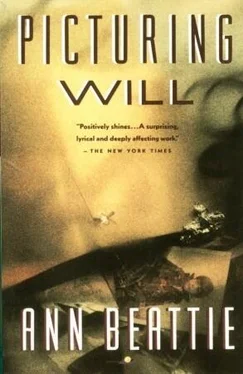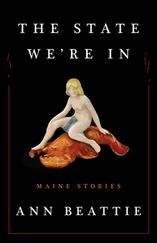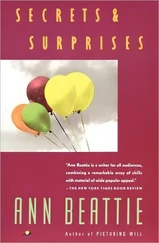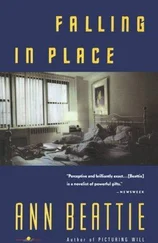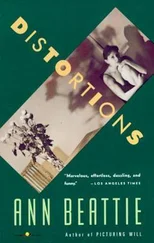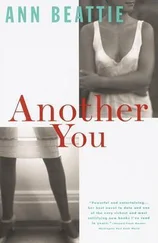The deer was dead. Wagoner, as if he had been just a moment’s apparition, had suddenly disappeared (later, he would tell her that once he saw she was all right he ran down the hillside to take a piss before his bladder exploded). “Let’s move the cars,” Batman was saying. “We’ll have a real pileup if we don’t.”
The wind blew a swirl of leaves against Mary Vickers’s leg as she stood shakily outside the car, and she jumped, thinking that something had stabbed her. She could smell the dead deer’s blood, and taste blood inside her mouth. Mel stood beside her, frowning and examining her cut lip. If Mel was there, then Jody must be there. She looked down and saw that the side mirror had broken. Glass beads spread out in the road as though fish had spawned there. Was this the same world in which little boys chased butterflies? She turned and looked at Jody.
Jody had been moving fast. She had a roll of 1000 ASA in her camera and was in the process of taking photographs of Casper the Ghost as he crouched with Peter Pan by the car headlights. As she moved the camera and Mary Vickers’s startled look suddenly became the central image of the frame, she clicked quickly. Thank you, God, she was thinking, for the invention of the auto winder. The next shot she took was the photograph that would later be blown up and hung on the large wall to the right-hand side of Haveabud’s gallery in New York — the primary display wall, the place people always looked as they began to find their way into the depths of the gallery: Mary Vickers’s eyes, bright enough to bore a hole through the camera lens, full moon shining to one side, people clotted together on the road, and in the background the large form of a ghost, white body billowing in the wind, looking down at who knew what.

Of course you do not want the child to be a ventriloquist’s dummy, but if there could be a bit more sitting on the knee, a little less of the back of the head and more of the profile as you spoke, that might be all the better. The child that reminds you of your own mortality needs so much tending to — so many wisps of hair brushed off the forehead, so many dollar bills handed out, so many anklet cuffs turned down, so much humming to accompany the soprano-sung solo — that it is almost impossible to decide whether to be as quick-talking as an escaped convict, or as patient as a penitent .
It is understandable that parents play a little game of self-deception and think they know everything about their child — that with their peripheral vision and with their ear inched backward an extra bit to listen they need not turn to see the child’s predictable expression: the gleeful smile, the lowered eyes. In this way, they miss the unexpected. They make the mistake of thinking children are simpler than they, and that therefore they have children figured out. (The children know better. They know that at least some of the time they can rush toward danger faster than their parents can stop them. That the parent who confiscates the water gun has failed to notice the slingshot in the back pocket. That tying shoelaces is a reassuring activity for parents. That off-key bedtime singing should be tolerated because it helps parents unwind.)
You have created the child, but you could not have anticipated the child’s power. Because the child’s presence and desires are so constant, it becomes the course of least possible pain to persuade yourself that being subsumed is synonymous with parenthood. You can only pray that by early evening the child’s eyelids will grow heavy with sleep. Then you hope that the sleeping child will not loom large in your own dreams, that once the night-light has been switched on, that beam of light alone may guide the child to dreamland .
In the silence of the house, you can sort out the day’s failures and successes. You can admit that you have approached the child with a mixture of awe, regret, and envy. Wouldn’t it be nice to scream louder than the child? To plead for peace as diligently as the child pleads for adventure? Couldn’t the tables be turned, and couldn’t you be found hiding underneath?
Parents can endure only so many tears before they become impervious, can listen to only so much pleading before whatever is being requested — the smooth peanut butter, the puppy in the pound — begins, cosmically, not to matter. It is predictable that the child denied a mongrel will contort its face into a version of the thing it most desires .
Fact: The child is your child whether or not the crib seems some days like a sinking ship. In order to proceed, focus your attention even though the haunting lullaby you sing distracts you. Grab on to the diaper as if you were clinging to the mast of a ship. Ignore the Sirens’ song tinkling on the child’s music box that would lure you into drowning in memories of your own childhood. Consult the experts and let them steer the way; call a sympathetic friend whose child is six months older .
There are so many books published to advise you about the child’s upbringing, so many predictions about patterns you will notice and pleas to which you will be subjected. Psychologists will speak to you on early-morning television shows, mothers in the park will disagree, relatives will try to pull the rug out from under whatever you believe, the pediatrician’s calm may turn to poorly disguised mystification, and the comic on late-night TV will effectively satirize the creature whose existence you care so much about .
The message is always to change doubt to certainty and proceed. Sit by the sandbox with newfound strength. Embrace the squirming child and urge him to behave differently. Insist on eye contact when you speak. Do not let others turn the child upside down. Check the baby-sitter’s references. Lock the cabinet that contains the cleaning products below the sink. Regular visits to the doctor. Two security blankets, so one can be washed. Check toe room in shoes regularly, by depressing the leather underneath your thumb. Comb tangled hair from the ends up. Speak out against environmental hazards. Look out for danger, but do not communicate your fear to the child. Buckle your seat belt. Cut down on consumption of red meat. Learn a jingle called “The Toothbrush Is Your Friend.” Advise him not to bother kitty when she’s eating. Try to make a game of gathering up toys with the child. Don’t overdramatize the scary parts of books. Do everything right, all the time, and the child will prosper. It’s as simple as that, except for fate, luck, heredity, chance, the astrological sign under which the child was born, his order of birth, his first encounter with evil, the girl who jilts him in spite of his excellent qualities, the war that is being fought when he is a young man, the drugs he may try once or too many times, the friends he makes, how he scores on tests, how well he endures kidding about his shortcomings, how ambitious he becomes, how far he falls behind, circumstantial evidence, ironic perspective, danger when it is least expected, difficulty in triumphing over circumstance, people with hidden agendas, and animals with rabies. With these things in mind, you will watch the child hopscotch from certainty to uncertainty, throwing the stone of trust before him, going all the way to the end by hopping one-footed, then turning and hopping back, full grown, much taller, with a puzzled expression that may not leave his face whether he is succeeding or failing .
Does it seem impossible that the child will grow up? That the bashful smile will become a bold expression? The sparkling eyes in need of corrective lenses? That fevers will subside, that there will be no more bloody knees, that a briefcase will replace the blue security blanket? You must resist the tendency to think ahead; wishing for peace is not the same as wanting things to change forever, and when all is said and done (a state only songwriters believe in), the child will never really be gone, even though he grows up. You will find that although the child may be remembered in association with one or two prized toys, more likely the child will be remembered alone, standing with his legs parted, his arms dangling at his sides, pants fallen down a bit so that only the toes of the sneakers are visible. He will be standing the way he stood in the snapshot, with an expanse of field — or maybe the beach — around him. A little thing, but you will remember that distinctly without having a photograph in front of you. That will be the way, in fact, the child will stay: a visual image — one that, even at the time, you squinted to look harder at, whether or not a camera was raised to your eye .
Читать дальше
